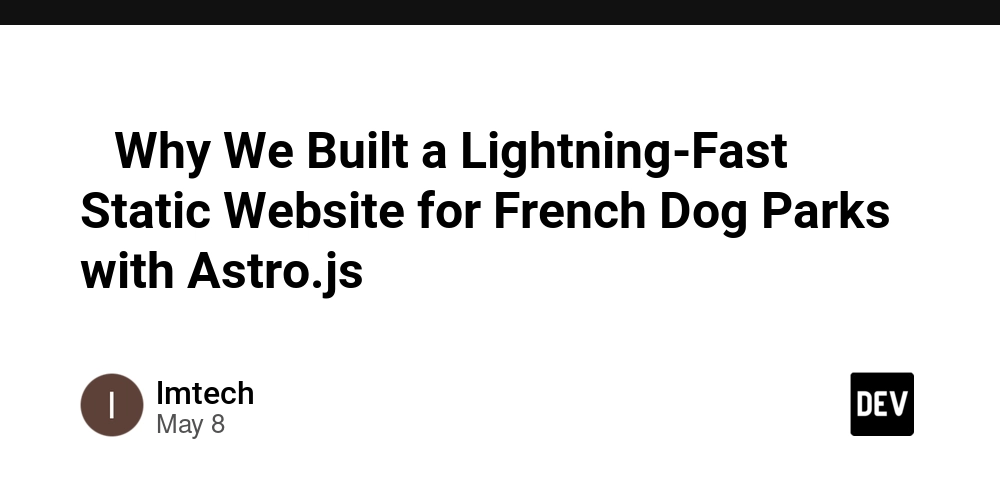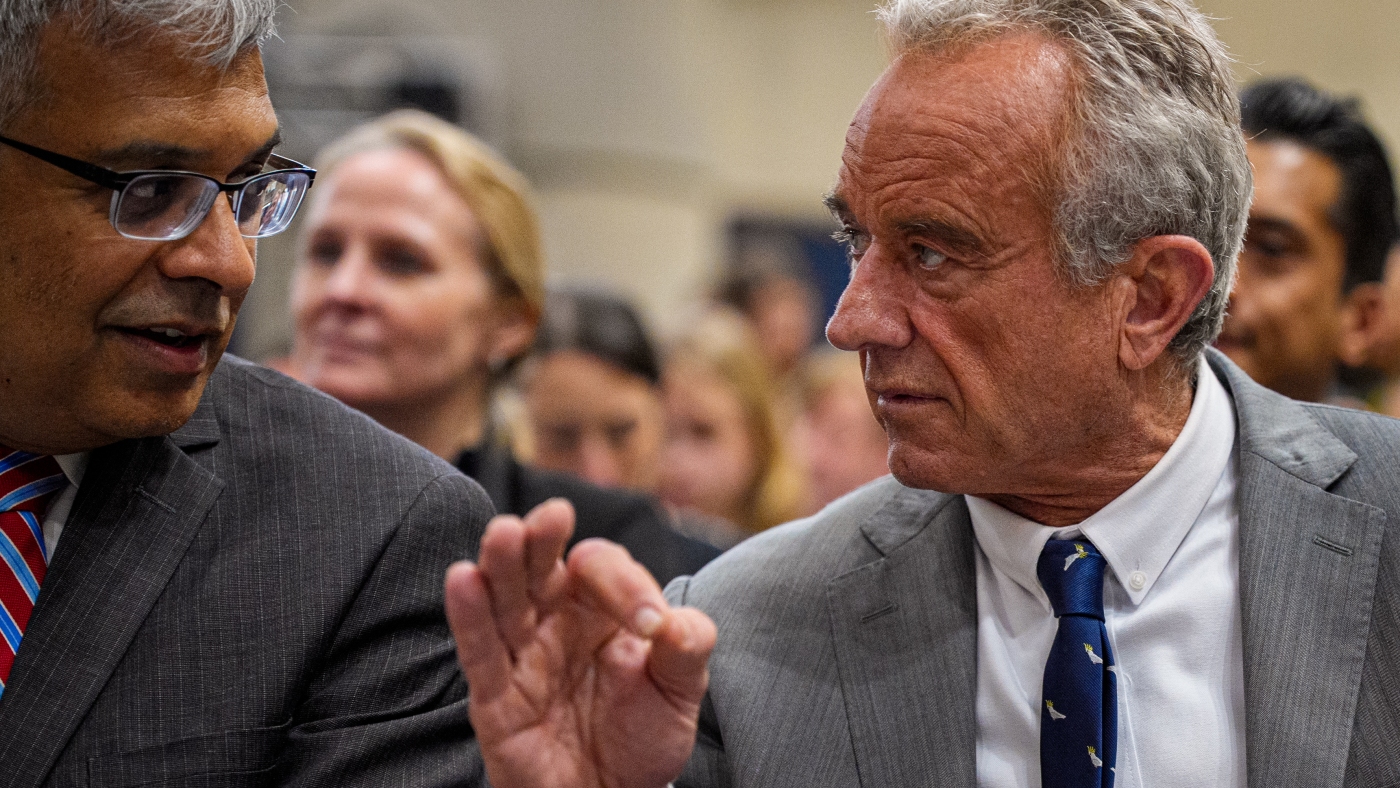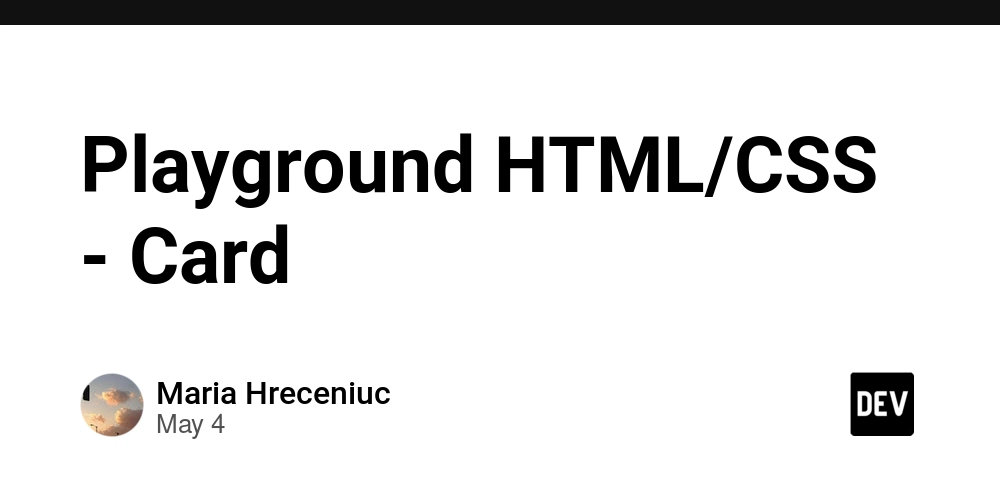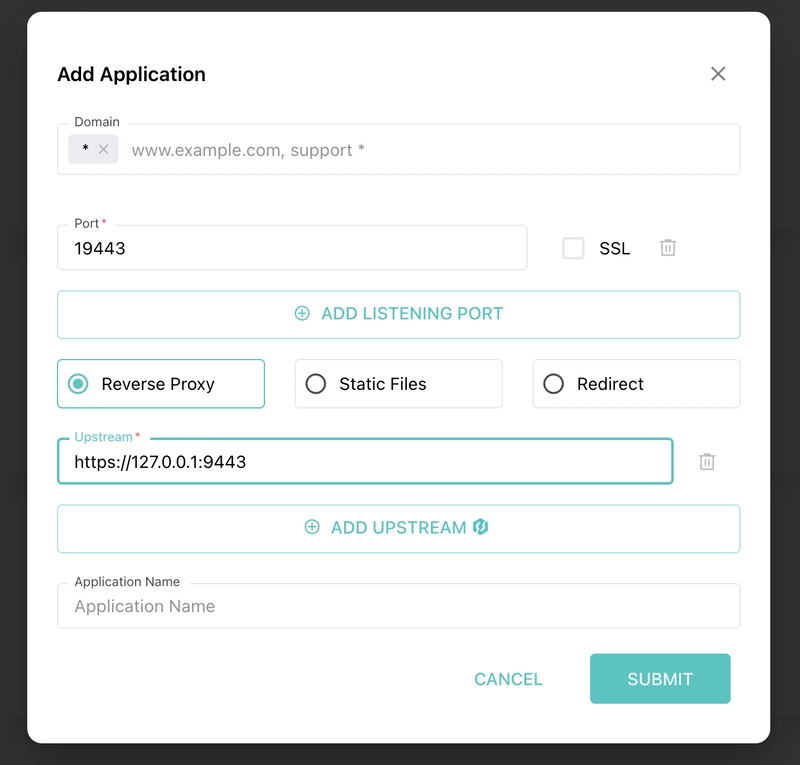Navigating Financial Sustainability in Open Source Projects
Abstract This post dives deep into the critical subject of financial sustainability for open source projects. We explore the evolution of open source funding, key financial planning tools, and their integration with emerging technologies such as blockchain and NFTs. By examining practical applications, challenges, and future trends, this article offers developers, project managers, and community members actionable insights. We also highlight relevant resources—from sustainable funding for open source to open source project sponsorship opportunities—and reference insightful posts on Dev.to, ensuring you gain a holistic view of this rapidly evolving domain. Introduction Open source projects fuel innovation and technological progress by fostering a collaborative, transparent environment for developers worldwide. However, the sustainability of these projects increasingly depends on robust financial planning and funding models. In today’s digital age—where blockchain, NFT marketplaces, and decentralized applications are key players—maintaining a healthy financial ecosystem is crucial for long-term survival. In this post, we will explore why financial planning is critical for open source projects, the evolution of funding tools, and the tangible benefits and challenges in managing finances as a community. Whether you are a developer involved in blockchain innovations or a project manager striving for transparency, this post is designed to aid in understanding and navigating financial sustainability in open source ecosystems. Background and Context Evolution of Open Source Funding The history of open source software is intertwined with community collaboration and the free software movement of the 1980s. Visionaries like Richard Stallman and licenses such as the GNU General Public License (GPL) laid the foundation for an era of free, collaboratively developed software. Over time, as open source projects proliferated and diversified into sectors such as cybersecurity, blockchain, and NFTs, the need for financial planning emerged due to: Infrastructure Costs: Ongoing expenses for servers, hosting, and security audits. Contributor Compensation: Despite the volunteer spirit, often key contributors require some form of remuneration or incentive. Complexity of Global Operations: Managing multi-currency transactions and international funding. Today’s open source ecosystem increasingly relies on financial management tools that reflect the core values of transparency and collaboration. Such tools help reduce funding gaps and build community trust by making all financial transactions open and auditable. Ecosystem Context Open source projects now form the backbone of many dynamic sectors. For instance, blockchain projects leverage decentralized funding and smart contracts, while NFTs disrupt traditional conceptions of digital ownership. When integrated with tools like open source project financial planning tools, these projects not only track revenues and expenditures but also publish open dashboards to allow community-wide oversight and participation. This collective transparency helps bridge the trust gap between developers, sponsors, and users. As additional platforms such as GitHub Sponsors and OpenCollective drive community contributions, a viable, sustainable model for open source funding is emerging—one that balances volunteer contributions with professional development needs. Core Concepts and Features The central tenets of financial planning for open source projects include transparency, customizability, and the integration of decentralized funding models. Below, we outline the core concepts and features of modern financial planning tools used by open source projects. Key Financial Tools and Their Features Several financial tools have evolved to support the unique requirements of open source projects. Key examples include: Tool Core Feature Use Case GNUCash Double-entry bookkeeping, multi-currency support Ideal for cross-border contributions and budget tracking Ledger Command-line accounting and automated scripting Suitable for technical teams who prefer text-based input Odoo Modular ERP with integrated financial functions Benefits projects needing comprehensive business management ERPNext All-in-one ERP solution with detailed financial reporting Supports complex projects with diverse stakeholder needs Essential Features in Financial Tools To effectively serve open source projects, these tools emphasize key features: Ease of Use: Intuitive interfaces to manage budgets and track spending. Scalability: Support for both small projects and enterprise-level operations. Security: Robust methods, including cryptographic checks and smart contract integrations. Transparency: Open dashboards and audit trails that allow any community member to review financial decisions. Customizability: Modular design
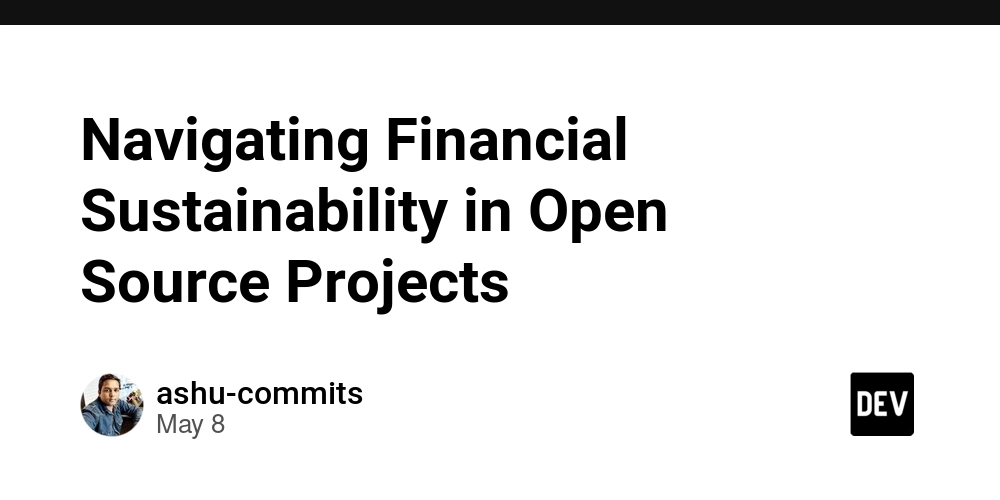
Abstract
This post dives deep into the critical subject of financial sustainability for open source projects. We explore the evolution of open source funding, key financial planning tools, and their integration with emerging technologies such as blockchain and NFTs. By examining practical applications, challenges, and future trends, this article offers developers, project managers, and community members actionable insights. We also highlight relevant resources—from sustainable funding for open source to open source project sponsorship opportunities—and reference insightful posts on Dev.to, ensuring you gain a holistic view of this rapidly evolving domain.
Introduction
Open source projects fuel innovation and technological progress by fostering a collaborative, transparent environment for developers worldwide. However, the sustainability of these projects increasingly depends on robust financial planning and funding models. In today’s digital age—where blockchain, NFT marketplaces, and decentralized applications are key players—maintaining a healthy financial ecosystem is crucial for long-term survival.
In this post, we will explore why financial planning is critical for open source projects, the evolution of funding tools, and the tangible benefits and challenges in managing finances as a community. Whether you are a developer involved in blockchain innovations or a project manager striving for transparency, this post is designed to aid in understanding and navigating financial sustainability in open source ecosystems.
Background and Context
Evolution of Open Source Funding
The history of open source software is intertwined with community collaboration and the free software movement of the 1980s. Visionaries like Richard Stallman and licenses such as the GNU General Public License (GPL) laid the foundation for an era of free, collaboratively developed software. Over time, as open source projects proliferated and diversified into sectors such as cybersecurity, blockchain, and NFTs, the need for financial planning emerged due to:
- Infrastructure Costs: Ongoing expenses for servers, hosting, and security audits.
- Contributor Compensation: Despite the volunteer spirit, often key contributors require some form of remuneration or incentive.
- Complexity of Global Operations: Managing multi-currency transactions and international funding.
Today’s open source ecosystem increasingly relies on financial management tools that reflect the core values of transparency and collaboration. Such tools help reduce funding gaps and build community trust by making all financial transactions open and auditable.
Ecosystem Context
Open source projects now form the backbone of many dynamic sectors. For instance, blockchain projects leverage decentralized funding and smart contracts, while NFTs disrupt traditional conceptions of digital ownership. When integrated with tools like open source project financial planning tools, these projects not only track revenues and expenditures but also publish open dashboards to allow community-wide oversight and participation.
This collective transparency helps bridge the trust gap between developers, sponsors, and users. As additional platforms such as GitHub Sponsors and OpenCollective drive community contributions, a viable, sustainable model for open source funding is emerging—one that balances volunteer contributions with professional development needs.
Core Concepts and Features
The central tenets of financial planning for open source projects include transparency, customizability, and the integration of decentralized funding models. Below, we outline the core concepts and features of modern financial planning tools used by open source projects.
Key Financial Tools and Their Features
Several financial tools have evolved to support the unique requirements of open source projects. Key examples include:
| Tool | Core Feature | Use Case |
|---|---|---|
| GNUCash | Double-entry bookkeeping, multi-currency support | Ideal for cross-border contributions and budget tracking |
| Ledger | Command-line accounting and automated scripting | Suitable for technical teams who prefer text-based input |
| Odoo | Modular ERP with integrated financial functions | Benefits projects needing comprehensive business management |
| ERPNext | All-in-one ERP solution with detailed financial reporting | Supports complex projects with diverse stakeholder needs |
Essential Features in Financial Tools
To effectively serve open source projects, these tools emphasize key features:
- Ease of Use: Intuitive interfaces to manage budgets and track spending.
- Scalability: Support for both small projects and enterprise-level operations.
- Security: Robust methods, including cryptographic checks and smart contract integrations.
- Transparency: Open dashboards and audit trails that allow any community member to review financial decisions.
- Customizability: Modular designs that enable integrations via APIs or plugins.
- Decentralization: Incorporation of blockchain-based funding models with smart contracts automating payments.
Bullet List: Core Benefits
- Enhanced Trust: Open financial records build community and sponsor confidence.
- Improved Efficiency: Automation reduces manual errors and administrative overhead.
- Global Reach: Multi-currency support enables funding from an international base.
- Increased Innovation: Transparent systems encourage community contributions and creative improvements.
- Risk Mitigation: Detailed tracking and analytics help identify and address funding gaps early.
Applications and Use Cases
Real-world examples illustrate how advanced financial planning tools can transform project sustainability and operational efficiency:
Case Study 1: Blockchain Infrastructure Project
A mid-sized blockchain platform integrated GNUCash with smart contract automation to manage multi-currency transactions across diverse teams. Key outcomes included:
- Real-Time Tracking: Automated dashboards displayed current expenditure, establishing clear audit trails.
- Seamless Payments: Smart contracts triggered automated payments linked to project milestones.
- Enhanced Sponsorship: Transparent financial reports attracted new corporate sponsors and community donations.
For more detailed insights on similar implementations, refer to open source project financial sustainability tips.
Case Study 2: NFT Project Financial Sustainability
A prominent NFT project, managing a large digital art portfolio, leverages ERPNext combined with decentralized APIs. Their approach to financial management led to:
- Streamlined Revenue Tracking: Detailed reports on NFT sales and royalty incomes.
- Optimized Budgeting: Transparency allowed for effective allocation of funds for development and marketing.
- Decentralized Contributions: Integration with blockchain-based funding platforms enabled direct cryptocurrency donations.
Case Study 3: Hybrid Crowdsourced Funding
A globally distributed open source initiative utilized Ledger alongside Blockchain funding platforms. The integration enabled:
- Micro and Macro Donations: Aggregated numerous small-scale donations with larger corporate sponsorships.
- Community Accountability: Public financial records created accountability for every contribution.
- Volunteer Incentivization: Custom modules managed in-kind work contributions, reducing the dependency on unpaid labor.
Summary Table of Use Cases
| Use Case | Tool(s) Used | Key Outcome |
|---|---|---|
| Blockchain Infrastructure | GNUCash, Smart Contracts | Real-time tracking and transparent multi-currency support |
| NFT Financial Management | ERPNext, Decentralized APIs | Streamlined revenue tracking and optimized budgeting |
| Hybrid Crowdsourced Funding | Ledger, Blockchain Funding Platforms | Aggregated funding streams and enhanced community trust |
For further context, check out discussions on platforms such as Axie Infinity’s impact on open source funding.
Challenges and Limitations
While financial planning tools provide robust solutions, several challenges persist:
Funding Gaps and Resource Constraints
- Inconsistent Sponsorships: Many projects continue to rely on sporadic donations rather than steady funding streams.
- Budgeting Complexity: Without dedicated financial experts, forecasting and managing expenses can be challenging.
- Infrastructure and Maintenance Costs: Ongoing costs for security audits, hosting, and development are often underestimated.
Volunteer Dependency and Burnout
- Unpaid Labor Concerns: Reliance on volunteers may lead to burnout and sporadic commitment.
- Inadequate Incentives: Traditional financial tools often fail to account for non-monetary contributions, hindering motivation.
- Potential Conflicts: Decision-making conflicts may arise within decentralized governance models regarding resource allocation.
Technical and Security Integration Issues
- Interoperability Challenges: Different systems may use varying data formats, making seamless integration difficult.
- Smart Contract Vulnerabilities: Automated funding models, while efficient, are prone to security breaches if not properly coded.
- Balancing Transparency and Privacy: Open financial records can expose sensitive data, requiring careful design choices.
Governance and Community Dynamics
- Diverse Opinion Management: Decentralized communities must reconcile different views on budgeting and spending.
- Regulatory Uncertainty: Legal challenges surrounding decentralized finance and cryptocurrency donations can impede progress.
For a deeper discussion on these challenges, refer to open source project financial challenges.
Future Outlook and Innovations
Looking ahead, financial planning tools for open source projects are set to evolve further through several transformative trends:
Integration with Blockchain and NFT Technologies
- Smart Contract Automation: Future tools will likely automate complex funding mechanisms, triggering payments upon achieving critical milestones.
- NFT-Based Fundraising: Projects could issue NFTs as digital certificates of contribution, enhancing transparency and incentivizing donors.
Enhanced Transparency and Customization
- Modular Dashboards: Customizable dashboards will enable projects to filter financial data based on user needs while safeguarding sensitive information using advanced encryption.
- Decentralized Identity Management: Evolving identity management systems will ensure contributors’ privacy while still allowing full financial transparency.
AI-Driven Analytics and Automation
- Predictive Budgeting: AI can forecast funding needs and flag discrepancies before they impact the project.
- Automated Reporting: Real-time analytics will reduce administrative costs and improve decision-making accuracy.
Community-Driven Governance Models
- Decentralized Autonomous Organizations (DAOs): More projects may adopt DAO models, where community members vote on funding proposals and resource allocations.
- Collaborative Funding Strategies: Leveraging open platforms like open source project sponsorship opportunities can lead to a more inclusive funding model.
Additional Industry Insights
Recent Dev.to posts provide valuable perspectives. For example, Mastering Open Source Project Budget Management outlines strategies for tighter financial controls, while Exploring Open Source Developer Fundraising underlines community fundraising models as pillars for sustained innovation.
Summary and Conclusion
In summary, the journey toward financial sustainability in open source projects encompasses a blend of tradition and innovation. By embracing robust financial planning tools—from GNUCash to ERPNext—and integrating emerging technologies like blockchain and NFTs, open source projects can ensure transparent, efficient, and resilient funding models. The key takeaways include:
- Transparency and Accountability: Open dashboards and audit trails bolster community trust.
- Decentralized Funding: Integration with smart contracts and blockchain demonstrates the potential of automated, global funding systems.
- Adaptability: Customizable, easy-to-use financial solutions can scale with the evolving needs of tech projects.
- Community-Driven Governance: Decentralized decision-making through DAOs and collaborative sponsorship ensures every stakeholder has a voice.
- Proactive Risk Management: AI-driven analytics and continuous integration address potential vulnerabilities early.
As the digital economy evolves, the confluence of open source innovation, decentralized finance, and smart financial management will be paramount in sustaining projects over the long term. For further reading on these topics, you may explore sustainable funding for open source and visit insightful posts from Dev.to, such as Exploring Revenue Streams for Open Source Developers.
Ultimately, the future of open source projects depends on our collective ability to embrace innovative funding models that balance volunteer spirit with financial rigor. Let’s harness this combined approach to drive open source projects to new heights, ensuring that transparency, collaboration, and sustainability remain at the core of digital innovation.
By understanding and integrating comprehensive financial planning, developers and communities alike can transform challenges into opportunities for growth. Embrace the tools available, support collaborative funding initiatives, and join the movement towards a resilient open source future.












